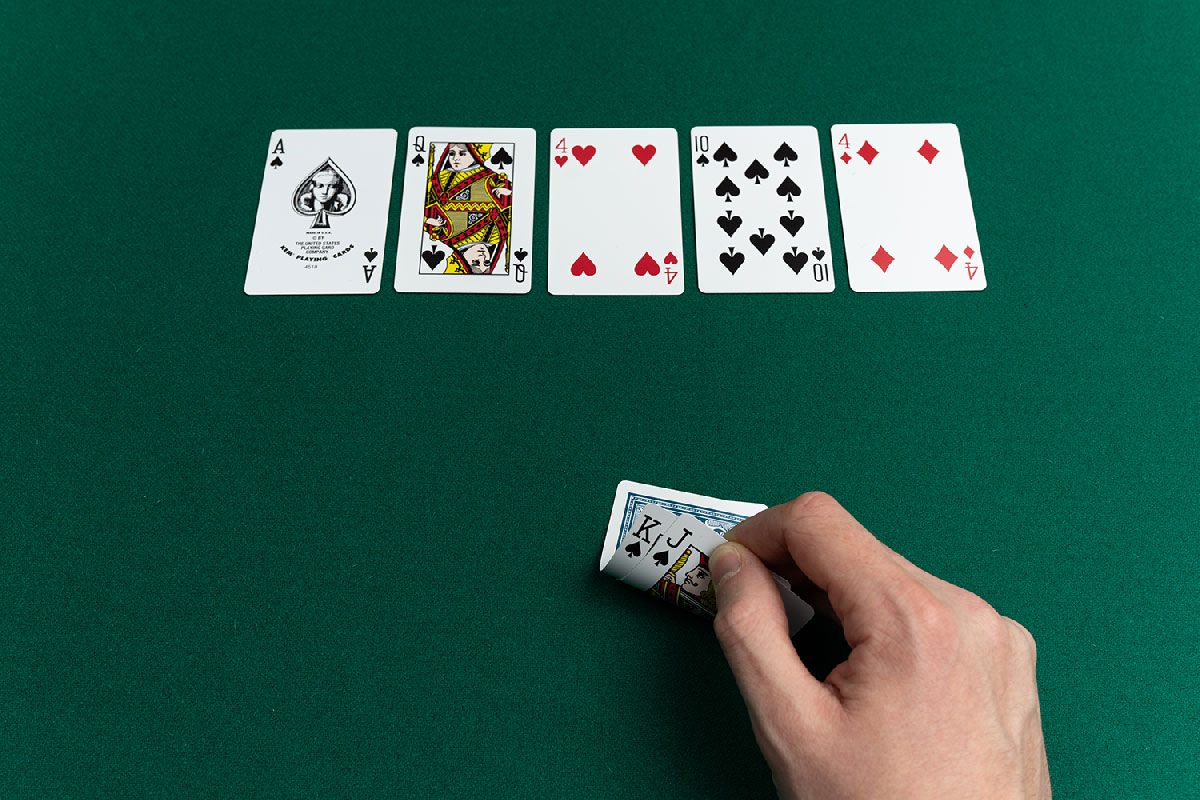
Top Texas Hold’em Poker Strategy For Huge Wins: Advanced Poker Strategy
When you walk into a casino, one of the first things that you will notice is the huge number of slot machines. It’s tempting to just sit down and play for hours on end, but if you want to win at poker, then you need to be ready when your opponents are.
To put it mildly, one of the most well-liked poker games in the world is Ultimate Texas Hold’em. Now, in terms to buy 4D online Singapore, ultimate Hold’em Texas is actually quite similar to regular poker. The strategy for ultimate Texas Hold’em is generally quite similar to that used for other poker games for this very reason.
This article discusses some Texas Hold’em preflop strategies that will help you dominate in this exciting card game!
What Is A Pre-Flop Strategy?
Preflop strategy refers to how you choose which cards to hold or bet during the early stages of the hand. The goal is to make the most money possible from the beginning while also minimizing the number of mistakes you make.

When playing Texas Hold’em, there are five distinct decisions that you can make before the flop:
- Do I raise my bet?
- What size should my bet be? (Minimum – Maximum)
- How much do I want to pay my opponent to call me?
- Should I fold or check?
- How should I bet my remaining chips?
The first decision, whether to raise, is usually made based on how strong your hand is and the strength of your opponent’s hand. If you feel like you have a fairly weak hand against a stronger opponent, raising may not be the best option. On the other hand, if you believe that you have an excellent hand and your opponent has a weaker hand, then it may be a great idea to raise. In general, the more confident you are about your hand, the more likely you are to raise.
Raising Your Bet Size
Before deciding whether to raise, you must determine what the correct amount is to start with. This step is extremely important because too high of a bet size could backfire and leave you with less money than you started out with. Too low of a bet size would leave you with little chance of winning even if you were dealt the perfect hand.
Bet sizes are determined by the following formula:
Your starting bet = 4 x Number of players
For example, let’s say that you are playing a $0.50/$1.00 limit game. There are three people already playing. You decide that your minimum bet is 50 cents, so you start off with $2.50. Your maximum bet is going to be whatever you think your opponent is willing to bet. Let’s say that you are facing a $10/$20 player. You think he’s going to make a $10 bet, so your maximum bet is now $25.
After determining your minimum and maximum bets, you’re left with the amount of money you actually intend to bet. This number is called your “pot.” So, in our example above, your pot is $25. Now it’s time to figure out how much you want to bet.
Betting Amounts Are Based on Hand Strength
One of the most important factors to consider when making your betting strategy is how good each player’s hand is. For example, if you had a good hand, you might want to bet a lot more than someone who only has two pairs. That way, if they fold their hand, you’ll still have enough money in the pot to win.
In addition, another factor to take into consideration is the total amount of money in the pot. If you have a weak hand, you might be able to improve your position by bluffing with a very large bet. However, if the pot is small, you might not be able to pull off such a move. Therefore, you will be better off betting smaller amounts with a good hand, especially if the pot is small.
Betting Amounts Are Also Based on Whether They Call Or Fold
Another important thing to consider is whether your opponent calls. If they call, they are basically giving you information about how strong their hand really is. If they fold, however, they don’t reveal any information. Therefore, you need to adjust your betting amounts depending on whether they call or fold.
Let’s say that you are playing against a person who always folds his hands. When he calls, you know that he has a relatively weak hand. In order to increase your chances of winning, you need to bet more aggressively. Conversely, if he never calls, then you can be more relaxed about your betting amounts because you don’t have any information about his hand.

How Much To Pay Your Opponent To Call
As we mentioned earlier, if you have a good hand, you should try to bet as much as possible to increase your odds of winning. However, if you have a bad hand, you need to minimize your losses. Therefore, it makes sense to play it safe and bet as little as possible.
It all comes down to the fact that your opponent has the right to fold their hand instead of calling yours. Therefore, you need to be willing to give them the opportunity to do so. If you are trying to get more money in the pot and they fold, then you will lose the money that they didn’t put in. As long as they keep folding, you need to keep doing it until either one of you wins the pot.
If you are getting dominated by your opponent, you definitely want to get them to fold sooner rather than later. But if you are holding a good hand, you probably won’t care if they fold or stay in the hand. You just want to maximize the amount of money that you win.
Betting Amounts Are Also Based On Whether Your Cards Match Up With Theirs
Finally, you need to consider whether your cards match up with their cards. If you’ve got the best hand, you obviously want to bet as much as possible. However, if you are holding a weak hand, you should be more conservative with your bets. After all, you don’t want to risk losing everything.
So, in general, you should avoid folding a flush unless you have a very powerful hand. For instance, if you’re holding 5 high cards and your opponent only has KK, you might want to wait and see what the turn brings. If he doesn’t hit anything, you can go ahead and fold. Otherwise, you can stay in the hand.
Conclusion
The key to a successful Texas Hold’em preflop strategy is to learn which situations require which types of plays. These situations include situations where you are the aggressor, where you are the passive player, and where you are the underdog. Once you understand these differences, you can make decisions that are optimal for the specific situation.
Keep in mind that there are going to be times when you want to bet big and times when you want to play it safe.
